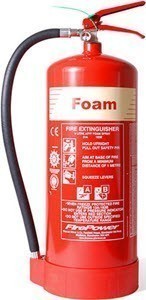
Perhaps you get a bit lost when it comes to trying to identify what classification a fire is. After all, it is easy to assume a fire is a fire and you can use any fire extinguisher to put it out. But that simply isn’t true, and it can be dangerous to think otherwise.
So having an understanding of the different types of fire, means you can responsibly and safely tackle a fire. Particularly with Class B fires, you can only use certain types of extinguisher to fight it with.
Using the wrong one will increase the risk you put yourself and others in, and instead add to the intensity of the fire.
Class B
So a class B fire is very dangerous as it is the burning of flammable liquids. Examples of flammable liquids include petrol, oil, paraffin, alcohol and certain paints.
They can ignite by heating them up to extreme temperatures, or with a simple spark. For example, that’s why they recommend you don’t smoke when filling your car up with petrol.
It does mean, that if you’re storing flammable liquids of any sort, you need to be well prepared.
Tackling a Class B Fire
A dry powder fire extinguisher is the most effective as it works by inhibiting the chemical reaction causing the fire. However, foam or CO2 extinguishers are also safe to use as they smother the fire, removing it of oxygen.
If you have a fire blanket big enough to cover the area, such as in a saucepan, then that too will work.
The absolute worst thing to try and put out a class B fire with is water.
Remember in science when your teacher poured water into a beaker of oil, and they layered? Well, they literally don’t mix.
Water will immediately vaporise into steam, which in turn spits out the oil and makes the flames even bigger. The big ball of flames will instead just spread the fire quicker.
Preventing a Class B Fire
As they can be very dangerous, it pays to take precautions to prevent a class B fire from breaking out.
You should never store more flammable liquid than absolutely necessary, and well away from sources of ignition.
If it’s possible, you could also consider storing liquid in flammable storage cupboards made of steel. They work be creating a barrier between a potential fire outside, and the flammable liquid stored in them, for around 30 minutes.
So remember to not use water, and instead have appropriate fire extinguishers close by, just in case.